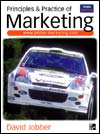Answer the self-test questions below and then click on 'submit' to send your answers. The test will be marked instantly, so that you can see how well you have done.
 |
1 |  | 
In businesss-to-business marketing, personal selling is usually a firm's most expensive promotional tool. |
|  | A) | True |
|  | B) | False |
 |
 |
2 |  | 
In personal selling 'prospecting' means: |
|  | A) | Digging through market research files for information |
|  | B) | Translating the purchaser's buying signals |
|  | C) | Looking for and calling on potential clients |
|  | D) | None of the above |
 |
 |
3 |  | 
Each of the following, except one, are needed to generate sales successfully. Which one? |
|  | A) | Providing service |
|  | B) | Handling complaints |
|  | C) | Relationship management |
|  | D) | Prospecting |
|  | E) | Deciding the price of goods |
 |
 |
4 |  | 
In many industries, the concentration of buying power into the hands of fewer and larger customers has led to: |
|  | A) | The need for buyers to sell on price |
|  | B) | An increasing number of sales personnel, to provide good service |
|  | C) | A trend towards key account management |
|  | D) | The need to offer key selling skills |
 |
 |
5 |  | 
Ideally, 'need and problem identification' should follow which stage in the selling process? |
|  | A) | The opening stage |
|  | B) | Presentation and demonstration |
|  | C) | The follow-up |
|  | D) | Dealing with objections |
 |
 |
6 |  | 
Research indicates that sales success is associated with: |
|  | A) | Implementing the marketing concept when face-to-face with customers |
|  | B) | Asking questions |
|  | C) | Agreeing with the customers' perceptions |
|  | D) | Acknowledging the viewpoint of the customer |
|  | E) | All of the above |
 |
 |
7 |  | 
In the sales process, order-takers: |
|  | A) | Are always frontline sales people |
|  | B) | Are sometimes called missionary sales people |
|  | C) | Attempt to persuade customers to place an order directly |
|  | D) | Respond to already committed customers |
 |
 |
8 |  | 
Geographic sales force organisation refers to: |
|  | A) | The area that can be serviced by a sales person |
|  | B) | How a firm's products can be distributed in an area |
|  | C) | Where the firm's clients are situated |
|  | D) | Organising a sales force by market segments |
 |
 |
9 |  | 
The following are typical examples of sales force strategy: to achieve a 5 per cent reduction in sales force costs, and to increase sales revenue by 8 per cent during the year. |
|  | A) | True |
|  | B) | False |
 |
 |
10 |  | 
The most commonly used method of sales force compensation is: |
|  | A) | Getting clients to pay |
|  | B) | A fixed salary, plus commission |
|  | C) | Payment (commission) when sales are made |
|  | D) | A fixed salary to give the sales force security |
 |
 |
11 |  | 
Qualitative measures of sales force performance include: |
|  | A) | Sales revenue |
|  | B) | Calls made on new accounts/prospects |
|  | C) | Number of new accounts opened |
|  | D) | Sales skills (questioning, making presentations, etc.) |
|  | E) | None of the above |
 |
 |
12 |  | 
The most practicable method for deciding the number of sales people required by a firm is called: |
|  | A) | The territorial approach |
|  | B) | The budget-based approach |
|  | C) | The comparative approach |
|  | D) | The workload approach |
 |
 |
13 |  | 
If a customer only agrees to buy from a supplier if the supplier also buys from them, it is termed: |
|  | A) | Selling by deception |
|  | B) | Bribery |
|  | C) | Reciprocal purchasing |
|  | D) | High-pressure selling |
|  | E) | All of the above |
 |




 2003 A McGraw-Hill Online Learning Centre
2003 A McGraw-Hill Online Learning Centre